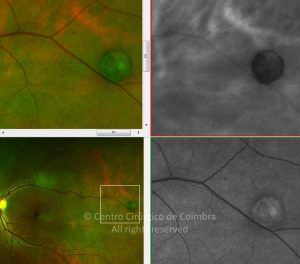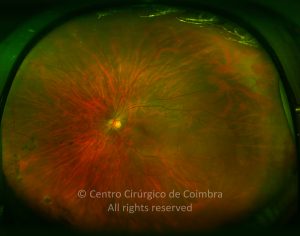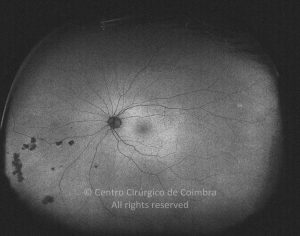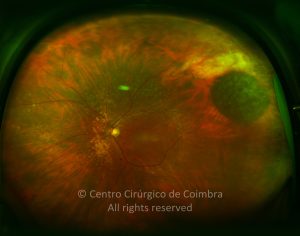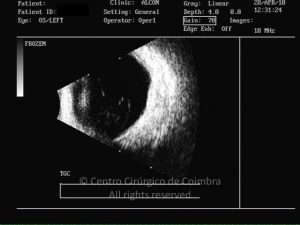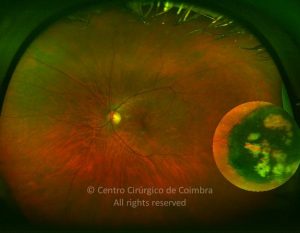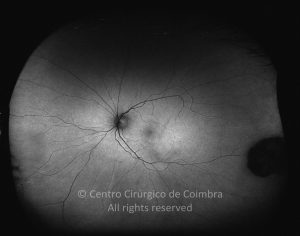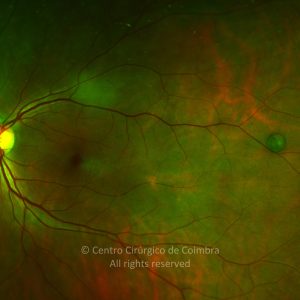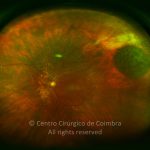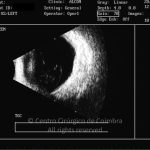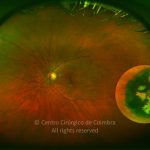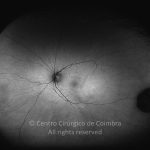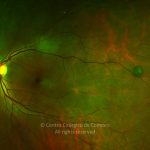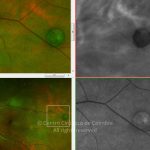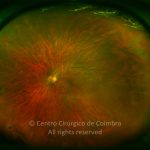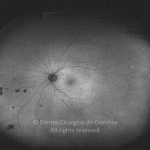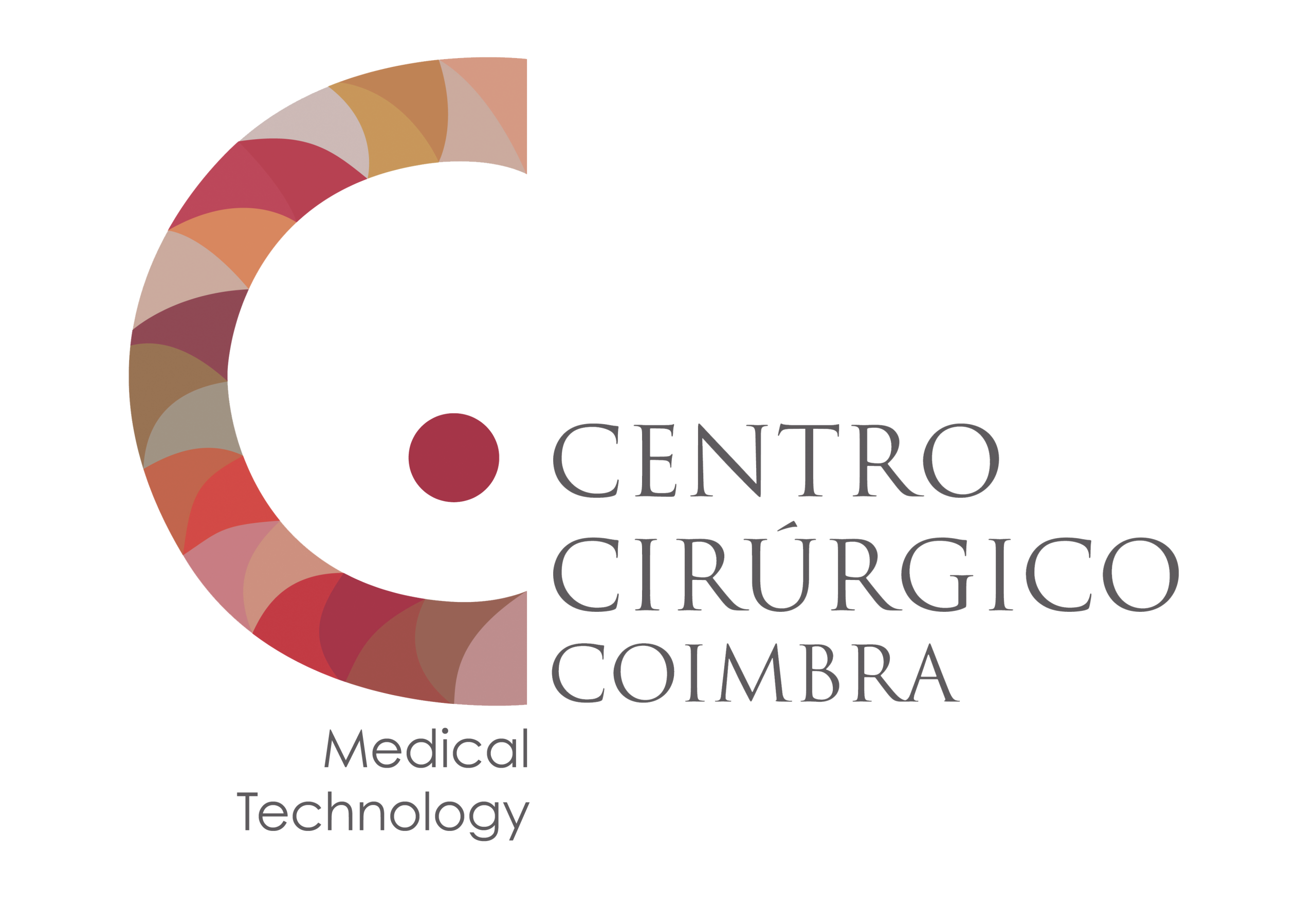Congenital hypertrophy of the retinal pigment epithelium (CHRPE) is an uncommon benign fundus lesion, which is usually asymptomatic and detected on routine ophthalmic examination.
CHRPE is the result of diffuse proliferation of pigment epithelial cells and is a well-defined lesion which is flat or slightly elevated, round, solitary, dark brown-to-black in colour, and has scalloped edges. In older patients, it may have foci of depigmentation.
No treatment is required, but if the lesion increases in diameter or gives rise to an elevated nodule, this may represent an adenoma or adenocarcinoma.
CHRPE can present in the context of familial adenomatous polyposis (Gardner’s syndrome), albeit, bilaterally with multifocal, smaller, ovoid lesions.
In fluorescein angiogram lesions have blackened hypofluorescence noted in all phases.
Differential Diagnosis
- Adenoma or adenocarcinoma of retinal pigment epithelium
- Massive gliosis of retina
- Metastatic melanoma to retina
- Reactive hyperplasia of retinal pigment epithelium
- Syndrome of bilateral diffuse uveal melanocytic proliferation (BDUMP) associated with systemic tumor





